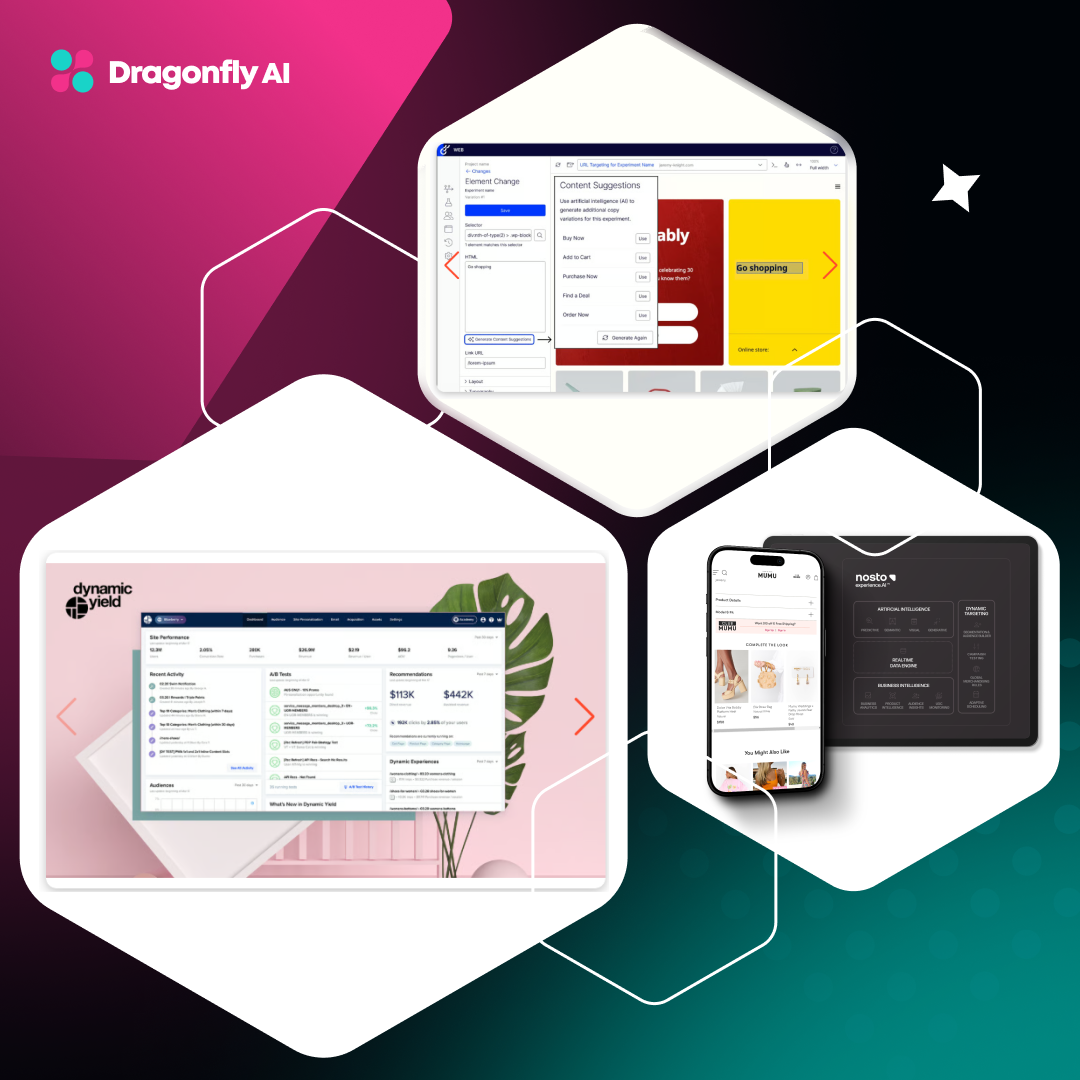The world has witnessed a significant shift in the retail industry in recent years. It's no longer just about walking into a store and making a purchase. The entire shopping experience has been transformed. According to a report by Statista, global e-commerce sales are projected to reach over $8.03 trillion by 2027, highlighting the trend toward e-commerce.
Nowadays, consumers want both the convenience of online shopping and the real-time experience of traditional stores. They expect a hassle-free and effortless shopping experience, no matter how and where they do it. That’s where omnichannel commerce comes in.
Omnichannel commerce refers to a flawless shopping experience across various channels. Through this strategy, customers enjoy a consistent experience, whether in a physical store, on a computer, or a smartphone. For example, if you're shopping at a place like Nike, you can expect the same service quality online as in their brick-and-mortar store.
In this guide, we will examine omnichannel experience in more detail and design a strategic omnichannel commerce plan that prioritizes customers.
The Rise of Omnichannel Commerce
The change in consumer behavior drives the move towards an omnichannel retail strategy. Today's consumers engage with brands across multiple platforms, such as physical stores, websites, mobile apps, and social media. They seek flawless online and in-store shopping transitions with highly personalized and tailored interactions.
Retailers now embrace omnichannel strategies to keep up with evolving consumer behavior. Learning more about the customers' preferences will help retailers offer personalized deals and recommendations, increasing their sales growth and customer retention rate.
Understanding Consumer Expectations in the Omnichannel Era
Consumers look for a smooth experience, whether browsing online, interacting on social media, or entering a physical store. These expectations demand brands to value their customers’ time and preferences.
To live up to the customers’ expectations, retailers need to focus on several key aspects of their omnichannel strategy:
- Consistent: Whether online or in-store, customers should get the same information and feel of the brand. Any difference in service quality can damage trust and weaken the customer-brand bond.
- Convenience: Omnichannel aims to simplify the shopping journey. This includes consistent service levels, return policies, and shipping options across every shopping channel.
- Personalization: Recognizing individual customer preferences through their shopping history and interactions allows brands to personalize the shopping experience for their consumers.
.png?width=1280&height=700&name=Blog%20image%207%20(1).png)
Key Components of an Omnichannel Commerce Plan
Creating an omnichannel retail strategy that bridges different shopping channels is crucial but can be difficult. For effective execution, there are several key components that retailers need to consider:
- Integrated Technology Platforms: A great omnichannel strategy lies in the technology that keeps everything in sync. This means having a tech system that manages inventory, sales, and customer information all in one place. These platforms enable retailers to access real-time data sharing across channels to ensure the store is up-to-date across all the shopping channels.
- Personalization Strategies: Using data to understand customers is a key to giving them a personalized and special shopping experience. This is where tools that recommend products or offer deals based on customer preferences and behaviors truly stand out.
- Seamless Customer Experience: Your strategy won't work if your customers' shopping experience feels difficult or confusing. Providing a seamless omnichannel experience means ensuring consistency across channels. Integrate e-commerce, inventory, and CRM tools while training staff for exceptional service on unified platforms.
- Mobile Optimization: Many customers use their phones to look up information or make purchases, so your plan should make shopping on mobile devices easy. This includes websites that are easy to navigate on phones and mobile apps offering unique features, like in-store guides, customer service chatbots, or quick product information.
- Social Media Integration: 54% of social media users research products on social platforms before purchasing. Social media is not just a place to promote your products. It has become a key part of the shopping experience. To make your omnichannel plan effective, you should focus on marketing strategies for social media platforms, customer engagement using fun content, and providing an additional shopping channel.
Transitioning from Brick-and-Mortar to Omnichannel
Transitioning from a brick-and-mortar retail setup to an omnichannel model doesn't happen overnight. It's a strategic process that involves careful planning, investment in technology, and a cultural shift within the organization. Here's a structured approach to navigate this transition effectively:
- Assess your Current Position: Start by assessing your existing capabilities in digital technology, customer engagement, and inventory management. Identify areas of strength and pinpoint gaps that need to be addressed.
- Develop an Omnichannel Strategy: Develop a step-by-step plan that shows how and when you’ll add omnichannel experience to your business. Ensure this plan fits your unique business and considers your industry and customer preferences.
- Implement Technology Solutions: Invest in technology that supports your omnichannel objectives. This might include integrating point-of-sale (POS) systems with e-commerce platforms, deploying customer relationship management (CRM) systems, and implementing inventory management tools.
- Educate and Train Your Team: The success of an omnichannel approach heavily relies on your staff. Your staff must understand the importance of providing a consistent customer experience across all channels. Training should cover the use of new technologies and the priority of customer-centric service.
Omnichannel Personalization Techniques
To stand out in today's marketplace, you must prioritize personalized shopping experiences. Here are some advanced techniques for achieving personalization in omnichannel retail:
- Data Analytics: Use data to understand customer behavior and preferences. Analyzing data from different channels can provide valuable insights for creating a personalized omnichannel shopping experience.
- AI-Driven Recommendations: Use artificial intelligence (AI) tools to suggest products that match customers' tastes. This tech learns from what customers have liked in the past to suggest new items they might enjoy.
.png?width=1280&height=700&name=Blog%20image%208%20(2).png)
- Targeted Marketing Campaigns: Consumers are 80% more likely to purchase when a brand offers personalized experiences. Craft your marketing messages to resonate personally with each customer. The right message, delivered at the perfect time and place, reinforces the feeling that your brand truly understands their needs.
Measuring Success in Omnichannel Commerce
Tracking the success of your omnichannel strategy is crucial for ongoing improvement. You can use certain key performance indicators (KPIs) to improve your omnichannel strategy. This approach allows for targeted analysis and improvement across different aspects of your business. Here are a few KPIs that can be used to measure success:
- Top-of-Funnel Marketing: Measures how successfully your marketing campaigns reach and attract new potential customers across channels.
- Order Volume/Revenue: Tracks average customer order value and identifies the channels driving the most sales and revenue.
- Inventory and Fulfillment: Measures the efficiency of stock management and order processing.
- Customer Satisfaction: Surveys and feedback highlight customer satisfaction, identifying areas for improvement.
- Customer Loyalty: Tracks repeat purchases and lifetime value, measuring how likely customers are to return for more.
By analyzing these KPIs, businesses can gain a comprehensive understanding of their omnichannel strategy's performance. Listening to customer feedback and regularly evaluating data will provide valuable insights that can be used to refine and optimize your omnichannel approach.
Overcoming Challenges in Omnichannel Implementation
Implementing an omnichannel strategy has its share of challenges. Here are some common challenges that retailers may face and how to avoid them:
- Data Integration: As stated in a Forbes article, “the heart of omnichannel retail lies in data integration.” Integrating data from various sources can be complex and time-consuming. This is where application programming interfaces (APIs) play a crucial role. Using APIs, you can synchronize data in real time across different platforms.
- Technology Infrastructure: Implementing the right technology infrastructure is crucial for a successful omnichannel strategy. Invest in scalable and flexible systems that can support the integration of online and offline channels.
.png?width=1280&height=700&name=Blog%20image%209%20(1).png)
- Organizational Alignment: Achieving organizational alignment is critical to successfully implementing an omnichannel strategy. Ensure that all departments, from marketing and sales to logistics and customer service, are aligned and working towards a common goal.
- Change Management: Transitioning from a traditional brick-and-mortar model to an omnichannel strategy requires a shift in organizational culture. Invest in change management, team collaboration, and technology training programs to ensure employees understand the benefits of the new strategy and possess the right skills and knowledge to implement it.
Conclusion
Shifting from traditional brick-and-mortar to omnichannel retail is essential in today's market. A well-crafted omnichannel commerce plan that covers both aspects is critical for ensuring no customer feels left out. This approach will create a unified shopping experience according to consumers' expectations.
Adopting omnichannel strategies is not just about keeping up with trends for retailers. It's a vital step to meeting the demands of modern consumers and staying ahead in the competitive retail market. The goal is to streamline the shopping process, making it as smooth and pleasant as possible. By keeping an eye on success metrics and being open to adjustments, businesses can truly connect with customers in meaningful ways.
Ready to transform your retail experience and connect with your customers like never before? Visit Dragonfly AI today, and let us help you create a seamless omnichannel commerce plan. Your customers are eagerly waiting for it.


.png?width=1280&height=700&name=Blog%20image%207%20(1).png)
.png?width=1280&height=700&name=Blog%20image%208%20(2).png)
.png?width=1280&height=700&name=Blog%20image%209%20(1).png)
